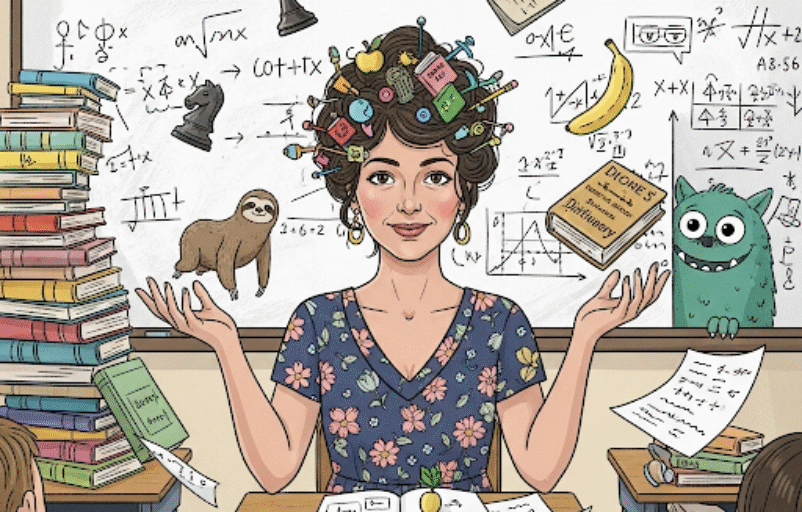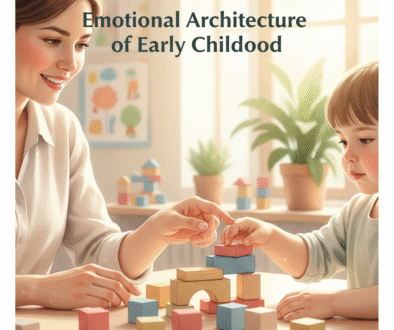
The Unpredictable Life of Teaching: Funny True Stories About Parents, Kids, and Classroom Chaos
Teaching young children is like playing chess with an unpredictable opponent—every move surprises you, and just when you think you have it all figured out, they switch the game to Uno. But if kids can catch us off guard, parents? Oh, they take it to another level.
The Headache Incident
One day, I was battling a headache, and my classroom seemed to have turned into a chaotic symphony of little voices and fidgeting bodies. I tried every method in my teacher’s toolkit to bring some order—nothing worked. I had one of those moments when you realize that even the best-laid plans can’t keep the energy of four-year-olds in check. Finally, I decided to try something different. I calmly told the class, “Okay, everyone, we need to calm down today because I have a headache, and the noise is making me feel sick.” For a few precious minutes, it worked. But, how many times can you repeat the same thing to four-year-olds? Five minutes later, the noise was back up, and so was my headache. A few days later, I got a call from the mother of one of my students. “Ma’am,” she said, “My child told me that she is giving you a headache.” I blinked. “What? No, I never said that,” I replied. “I simply told them that I was feeling unwell and had a headache, but I never said anything like that.” I tried to explain that sometimes children misunderstand things, and with their limited vocabulary, things can come out differently than intended. But, let’s be honest—parents are quick to think the worst. How many times have we heard the question: “Did anyone hurt you at school today?” to which the child, of course, answers “yes,” because that’s what parents want to hear. Sometimes, we, as teachers, end up being misinterpreted because we’re the ones in the spotlight. We can’t even have a simple headache without it turning into an entire drama. It’s funny—next time, I’ll just tell them I’m getting a “headache from too much wisdom.”
The Case of the Mysterious “Slat”
It all started with a simple class discussion about animals. We watched a video about the slow, adorable sloth, and the kids admired the “cute bear” (because everything furry is a bear in kindergarten logic). Later, while observing a little girl who took an entire hour to finish her meal, I casually commented, “She eats as slow as a sloth!” A factual and innocent statement, right?
Wrong.
The next day, her father asked to see me about a “very disturbing matter.” What could it be? A lost lunchbox? A playground mishap? Nope.
“Ma’am, I want to know why you called my daughter ‘slat.'”
I blinked. My brain searched through every word I had ever spoken in my life. “Slat?” I repeated. “Sir, I don’t think that word exists in my vocabulary.”
He insisted, “She said you called her ‘slat.’ And if she said it, it must be true.”
Ah. Light bulb moment. The sloth incident.
After explaining that I was referring to an animal and not some mysterious insult, we both laughed, but it left me wondering: how did we reach a point where a parent wouldn’t even consider a misunderstanding first? You know, sometimes I feel like I should carry a dictionary and a crystal ball to parent meetings. Maybe then I could predict all these “creative interpretations” of innocent remarks.
The “Genius” Who Only Ate Yellow Food
Another unforgettable case: a child whose mother claimed he was a born genius. By age two, she said, he could count to 100. By four, he apparently knew everything the school was teaching.
Except, well… he didn’t.
His social-emotional skills were underdeveloped. He often sat in class, lost in his own world, entirely unaware of what was happening—except when it was snack time. His mother insisted he ate only healthy food, even sharing a picture of him enjoying chips and Coke at a hotel buffet as proof.
One day, she sent him to school with Starbucks food because he “wanted it for breakfast.” I refused. In class, all children eat the same provided food—allowing one child to bring something special would create unnecessary issues.
I became the villain in the parent’s eyes. When the topic of meals came up in a meeting, I pointed out that despite his so-called healthy diet, he only ate yellow food and refused anything else, no matter the effort. The mother, confident in her stance, finally said she would prove he eats normally.
So, we watched. She tried feeding him. He spat, fussed, and created a full-on drama. And her response? “Oh, he must just be having a bad day.” Well, in my next staff meeting, I’ll bring up the idea of a Yellow Food Curriculum. Who knows? Maybe I’ll start a revolution—after all, nothing says “nutrition” like a steady diet of chips and cornflakes, right?
The Child Raised Like a Doll
Then there was the mother who was raising a doll instead of a child. She continuously complained about her daughter’s clothes getting dirty during school hours and insisted that she remain spotless.
Time and again, I explained that getting dirty is part of learning. Messy clothes are evidence of engagement—proof that a child is happily exploring and learning through play. In my class, things are always happening; it’s vibrant, dynamic, and filled with hands-on experiences. But the mother remained unconvinced.
Finally, when the issue escalated, I told her plainly: “She is not a doll meant to sit and look pretty—she is a child, full of curiosity, eager to explore. In my class, this will happen. I will not let any child sit idly while others engage in hands-on activities and nature play, which are integral to child development.”
She wasn’t thrilled to hear it, but eventually, she came around. She even apologized, admitting that the pressure was coming from her in-laws, who didn’t understand why the child was always dirty.
I suggested a practical solution: Instead of dressing her in fancy party clothes, she could wear leggings and a comfortable top that wouldn’t restrict her movement. That way, she could fully enjoy her time at school without worrying about “ruining” her outfit.
And you know what? The next day, she walked in wearing leggings and a top—no fuss, no complaints. Sometimes, you just have to remind parents that, in the world of early childhood education, dirt is a badge of honor. And trust me, that’s coming straight from a teacher’s desk, where the only thing we’d change about those “messy” clothes is to call them “learning attire.”
The Sticker Distraction
Then there was the little girl with stickers—her prized possessions, carried daily to school despite multiple reminders not to bring them. Each time, those stickers stole the class’s attention, derailing every effort to keep the lesson on track. No amount of redirection worked; she simply “knew better.”
Finally, I had no choice but to talk to her parents. Their response? “She’s like this only! Hahaha!”
Well, so what about the rest of us? What about me? As an educator, I understand children express themselves in different ways, but some behaviours need guidance. Maybe I should just start handing out stickers to everyone—after all, we could all use a little glittery motivation, right?
The Cold That Spread to Everyone
How many of you have experienced it? A child with a runny nose, feverish eyes, and clear signs of needing rest—but still sent to school because “he was fine in the morning!”
No, he was not fine. And now, neither are the other twenty children who caught the same cold.
When a child sneezes all over their clothes, whimpers because they feel miserable, and struggles to keep up, what choice do we have? We comfort them, clean them up, and do what we can—while secretly praying we won’t be the next to fall.
Dear parents, if you don’t help us keep the germs at bay, I’m going to start wearing a full hazmat suit—would that make the message clearer? Or maybe just hand out anti-bacterial wipes as we enter the classroom?
The Mosquito Incident
One time, a parent called, upset that her daughter had been bitten by a mosquito in my classroom. Now, I know how this works—mosquitoes don’t care about the classroom’s well-maintained cleanliness or how many times we apply repellent. The door opens, someone enters, and boom—a mosquito flies right in like it owns the place.
I tried my best to reassure the mom: “I’m really working hard to train the mosquitoes to understand that this is not their playground. But they just keep buzzing off everything I say.”
At first, she didn’t get it, but then the laughter came. Sometimes a little humor with parents goes a long way.
And here’s the thing—teachers are human too. We have our own lives, and sometimes our only enemies are the mosquitoes that think they can do whatever they want. Guess I’ll need a degree in mosquito training next!
The Naughty Boy Who Wasn’t
There was one little boy who tested my patience in every possible way. He didn’t listen, he spoke back, and he did everything to challenge my authority. It felt like an impossible task to keep my cool.
But how, after all my experience, did I forget one simple truth? Children who are troubled often disturb others.
The very next day, his mother messaged me: “He’s down with a fever.” And there it was. The realization that once again, I had fallen into the same trap. Maybe next time I should start my day by taking everyone’s temperature before reacting to behaviour—just to avoid another ‘bad mood or bad fever’ situation. At least I’ll be prepared!
The Reality of Teaching: A Perfectly Imperfect Job
Teaching young children is a lot like trying to juggle flaming torches while riding a unicycle through a maze. Just when you think you’ve got it under control, something unexpected happens, and you’re left thinking, “How did I end up here?” From the mysterious misinterpretations of innocent comments to the chaos of everyday situations, it’s always a surprise. Some days, you’re the hero, other days, you’re the villain, and sometimes, you’re just the one holding the fort while everything else falls apart around you.
But no matter what, teaching is a job that requires more patience than a saint, a sense of humor that can survive a thousand chaotic moments, and a backbone made of steel—because if parents don’t misinterpret your every word, the kids will. One minute, you’re trying to explain why dirty clothes are proof of exploration, and the next, you’re explaining why mosquitoes just won’t take your “No entry” sign seriously.
And let’s not forget, every teacher has had that moment when you have to tell the kids to calm down, only for one to walk home telling their parents they gave you a headache. Welcome to the world of early education, where every misunderstanding becomes a case study in communication, and every day ends with you wondering how you survived it.
It’s a job that’s part detective, part mediator, and 100% unpredictable. But hey, we wouldn’t have it any other way—because at the end of the day, it’s those little moments that make you realize you’re doing more than just teaching; you’re shaping the future, one “slat” or mosquito bite at a time.
Because being a teacher means juggling a thousand tiny disasters, laughing at the chaos, and still somehow managing to keep it all together. Or, at least, pretending to.
And yes, after all that, you still have to remember to smile when you run into a parent in the grocery store.


